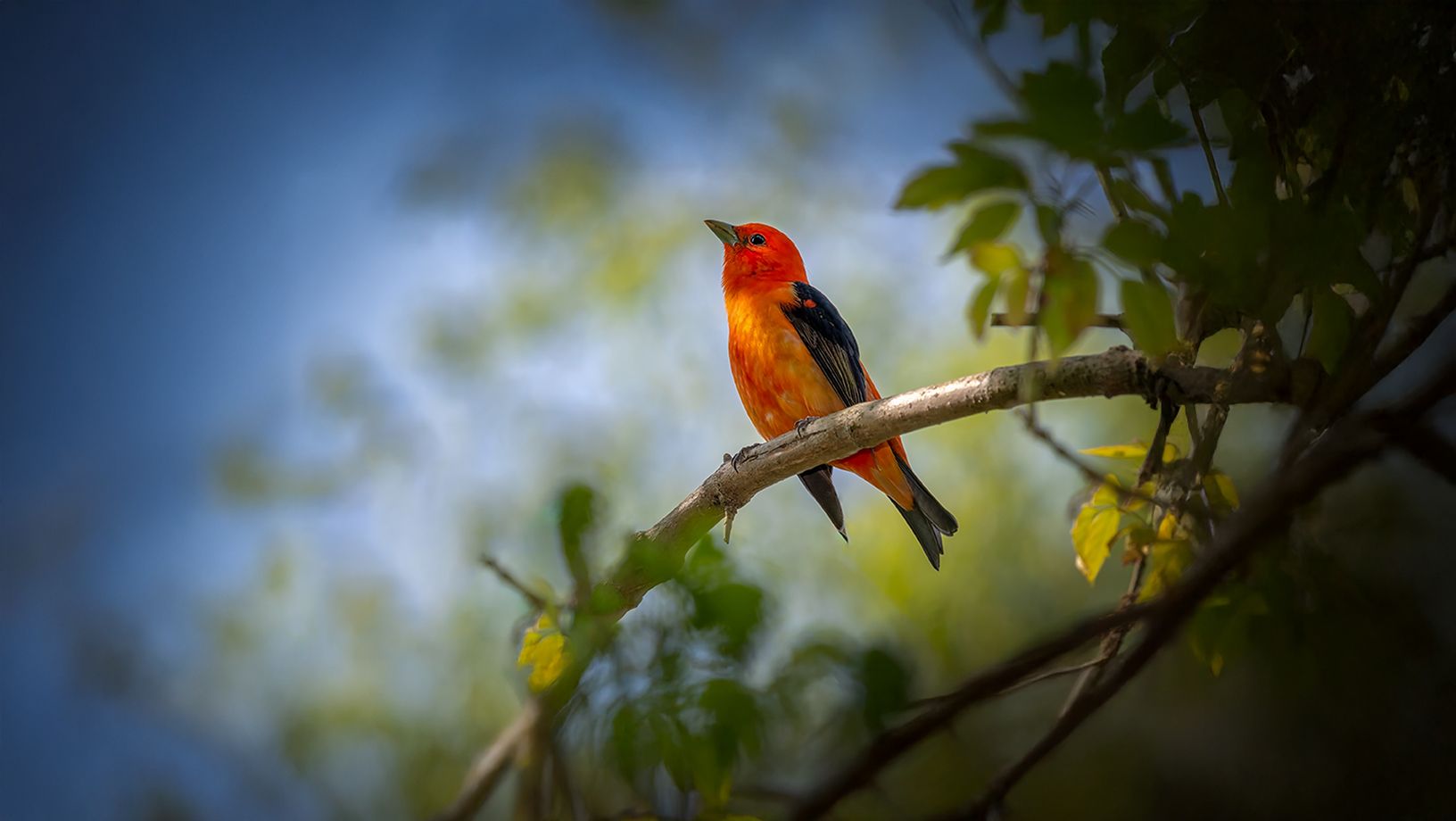What Type of Wild Bird Seed Should I Buy? (What to Feed Wild Birds)

In this Article
Wild bird feeders are a great addition to any yard. They can add a pop of color to your garden, ornament the trees around your property and attract beautiful surrounding wildlife. Bird lovers everywhere get excited when soaring wildlife comes to visit because they bring songs and vibrant colors with them.
While people know about bird feeders, they don’t always realize that there are many different styles of wild bird feeders to choose from. These different styles are designed to fit different wild bird food, feeding styles and breeds of birds so you can have all different types of flying friends coming to visit.
7 Types of Wild Bird Feeders:
While some types of birds like the same type of bird feed, others only eat a specific type of food or like certain conditions. For this reason it is good to know the different styles of wild bird feeders. Some of the most popular bird feeders to put in your yard include:
- Platform Feeders - Platform feeders are known to attract a wide variety of wild birds such as starlings, house sparrows and others. These feeders have an open, flat tray that are ideal for holding large amounts of seeds. Platform feeders are built to support weight and are perfect for holding heavier/larger birds like doves and pigeons. The trick to these feeders is to look for ones with drainage so that seeds do not stay wet. Drainage on a platform feeder might look like a screened bottom rather than a solid one or a bottom with several holes. If bird seeds get wet, they can grow bacteria and seeds can become unsafe for consumption. Also look for platform feeders that have a roof so that birds can stay dry during rainy weather and still get a meal.
- Window Feeders - For those that one to see birds up-close and personal, a window feeder may be a good option. The types of birds these feeders attract will depend on the type of feed you use, but generally attract birds like finches and chickadees. If you were to include live mealworms, you might attract birds like swallows and house sparrows who like insects. Window feeders are also great because they use suction cups to attach to your window and bring birds right up to your home where you can watch them. They are often made from clear plastic so you can get a great view while birds feed.
- House Feeders - House feeders, also known as “hopper” feeders, are great at protecting seeds against inclement weather. These feeders are what people are most familiar with as they are the ones that often look like little houses. They shield seeds on all sides from things like rain and bird droppings so lower the chance of bacteria growth. Unfortunately, if they do get wet on the inside, bacteria grows rapidly. So it is important to keep them very clean. Birds that like house feeders include finches, jays, cardinals, and titmice.
- Tube Feeders - Having trouble with squirrels? A tube feeder for wild birds might be the best option for you. Tube feeders are made of metal cages with tiny holes, just big enough for a small bird’s beak and talons so they can perch and feed. This type of feeder allows smaller birds, like sparrows, grosbeaks and finches, to access yummy seeds while keeping other wildlife out. The issue with these feeders is that they can be a little too good at keeping wildlife out - often keeping larger birds, like blue jays or cardinals, away from seeds as well.
- Hummingbird Feeders - Did you know that not all birds eat seeds? Some birds actually drink nectar. Hummingbirds, for example, love to drink nectar from flower blossoms. The issue is that flowers aren’t always blossoming. Hummingbird, or nectar feeders are great for these types of birds. You can fill them with a delicious source of nectar that draws these beautiful birds to your yard even when the flowers aren’t blooming. Other birds that drink nectar include mockingbirds, warblers, sparrows and thrushes.
- Suet Feeders - Every bird is different and likes to eat their food in a different way. Some birds, for example, like to peck at their food. This is where suet feeders come in. Suet feeders are made from wire or plastic and are usually attached to a tree or something similar. These feeders hold a solid chunk of food rather than a loose bunch of seeds. This allows birds to peck at a solid block. Birds can perch on these feeders and peck until pieces come loose from the block, fulfilling their hunting instinct. Birds that like suet feeders include species like woodpeckers, nuthatches and starlings.
- Thistle Feeders - A thistle feeder, also known as the Nyjer feeder, is specifically designed to hold the Nyjer seed. This is a seed from the African yellow daily. Birds that like this seed include finches, pine siskins, American goldfinches and juncos. You need a specific feeder for this seed because of its size and shape. They are often similar to tube feeders but also come in the form of a thistle “sock,” which is a fine mesh backs that birds know how to get the seed out of.
Regardless of what bird feeders you choose to put around your property, it is important to remember several things:
- Change out the seeds regularly - Birds love to snack, so you shouldn’t have to worry about seeds going stale because they should disappear before they have the chance to. But if after a few days you notice that one of your feeders still has seeds in it, it’s best to change them out for new ones. You wouldn't want to eat stale food! Not only this, but the longer the food sits out there, the higher chance it has at growing bacteria that could harm wildlife.
- Clean the bird feeders - Just like you would wash your dishes to prevent unwanted germs, you need to clean bird feeders to do the same. Clean your bird feeders at least once a week to prevent the growth of mold or bacteria. If there was rain that could have caused water to enter a feeder or if you notice bird droppings anywhere on a feeder, then you should clean it sooner.
- The more options, the more birds - The larger variety of feeders and the wider selection of feed you have in your yard, the larger diversity of wild birds you will see coming to your property for a delicious meal. So make sure to place multiple types of wild bird feeders and wild bird feed around your yard to draw in all types!
Frequently Asked Questions (FAQs)
Which bird feeders attract the most birds?
Platform feeders are known for attracting a variety of birds. But if you’re looking to have a wide range of wild birds in your yard, then you should have a wide range of bird feeders! Try hanging several types of feeders.
What bird feeder works best?
The bird feeder that works best is one that keeps seeds dry and clean for bird consumption. If seeds get wet, bacteria can build up, which isn’t good for any wildlife around your home. Make sure to clean your bird feeders regularly.
Should bird feeders be in the sun or the shade?
Birds like to feed in the sunshine, which has a clear view so they can see if there are any predators coming their way.

